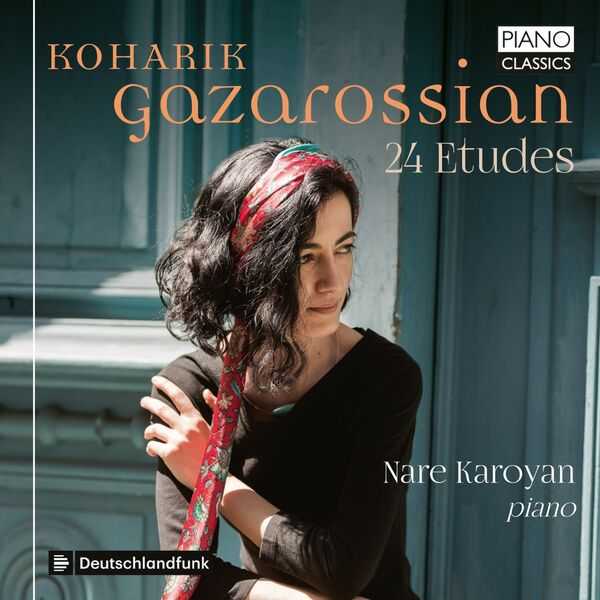

Composer: Koharik Gazarossian
Performer: Nare Karoyan
Format: FLAC (tracks)
Label: Piano Classics
Catalogue: PCL10263
Release: 2022
Size: 487 MB
Recovery: +3%
Scan: yes
24 Etudes
01. I. Allegretto
02. II. Animé et Grouillant
03. III. Andantino
04. IV. Vivo – Meno Mosso
05. V. Allegretto
06. VI. Con Spirito
07. VII. Andantino Cantabile
08. VIII. Andante Espressivo
09. IX. Con moto e con Anima
10. X. A la Marcia
11. XI. Allegretto con Spirito
12. XII. Allegro Majestuoso
13. XIII. Comodo e Tranquillo
14. XIV. Con moto e con Espressione
15. XV. Allegretto Grazioso
16. XVI. Allegretto
17. XVII. Lento
18. XVIII. Moderato
19. XIX. Vivo
20. XX. Vif et Rhythmé
21. XXI. Allegro
22. XXII. Allegretto
23. XXIII. Grazioso
24. XXIV. Allegro Furioso
Koharik Gazarossian (1907-1967), of Armenian descend, was born in 1907 in Constantinople (now Istanbul) and received there her first piano and composing lessons, her teachers were Edgar Manas and Rudolph Leibovitch. When she was not even 20 years old, she followed up on advice given to her and went to Paris in order to study composition and piano. She entered the Paris Conservatoire and took lessons with Paul Dukas (composition), Jean Roger-Ducasse (composition), Paul Fauchet (harmony) and Lazare Lévy (piano).
Koharik was very talented at learning languages quickly, she easily settled in Paris. In 1934 she gave her first piano recital in Paris, in the renowned Salle Pleyel. And she continued building up her career as pianist and composer, as far as it was possible with World War II coming up. She left Paris in 1939 for some years but returned after the war and continued commuting between Istanbul and Paris. In Istanbul she gathered artists, intellectuals and also religious authorities like the patriarch around herself – most of them Armenians like her.
Gazarossian proceeded to make a name and a career for herself as a pianist touring 24 “well-tempered” recitals, arranged by tonality after the model of Bach’s keyboard manuals. But she also composed throughout this time, especially for her own instrument, in a tonal language influenced by her teachers and by Armenian folk melodies and harmonies.
Gazarossian completed the Etudes in 1958, and they attracted the praise in particular of Armenia’s most renowned composer, Aram Khachaturian, who maintained that her reputation would have been much higher had she gone back to her native land rather than to Paris – though in fact she never did so, and she continued to live in Istanbul. The 24 Etudes for Piano are highly personal, pianistically innovative and challenging piano pieces, showing traces of a mélange of Armenian melodies, musical Zeitgeist of the first half of the 20th century and harmonies from the border zone of tonality, while containing reminiscences of Scriabin (No. 1No. 3) and Prokofiev (No. 10). Each of the Etudes is dedicated to a different friend, and the set thus testifies to a wide social circle of accomplished musicians from across Europe and Asia. Several of them are dedicated to the best of her pupils back in Istanbul, others to fellow female pianists such as Magdi Rufer and Idil Biret.
This is here the first complete recording of these scintillating piano studies by Gazarossian, the Armenian pupil of Dukas.



